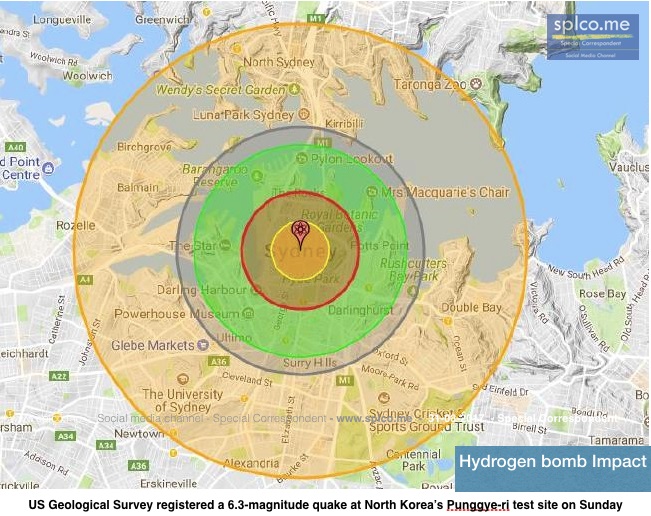NORTH KOREA claims to have successfully tested a hydrogen bomb sparked a furious response from the US, Japan, China and South Korea.

The US Geological Survey registered a 6.3-magnitude quake at North Korea’s Punggye-ri test site on Sunday, and Western experts believe this indicated Kim Jong-un’s regime had detonated a hydrogen bomb with a yield of 100 kilotons.
This is almost 10 times bigger than North Korea’s last nuclear test in September 2016. By contrast, the bomb dropped by the US on the Japanese city of Hiroshima in 1945 had a yield of about 15 kilotons.
Hydrogen or thermonuclear bombs use fusion, or the merging of atoms, to unleash huge amounts of destructive energy, unlike atomic bombs that use fission.
Pyongyang has repeatedly defied UN sanctions and international pressure by developing nuclear weapons and testing missiles, and the provocations have only intensified.
In the past two months it has conducted intercontinental ballistic missile tests, sending one over mainland Japan into the Pacific Ocean. It has also threatened to fire missiles towards the US Pacific territory of Guam.
It is important to note that Collaboration between Pakistan and North Korea on nuclear and missile technology dates back to the 1980s. In his 2008 book Goodbye Shahzadi, journalist Shyam Bhatia quoted late Pakistani premier Benazir Bhutto as saying that she had smuggled in uranium enrichment know-how during a state visit to North Korea in 1993.
Hallam, a member of the People for Nuclear Disarmament and the co-founder of the Human Survival Project, said a Hydrogen bomb dropped over Sydney’s Centrepoint tower would wipe out the city and only those west of Homebush would “have any chance of survival”. The fireball from a 100Kt weapon would cover the entire area from Clarence Street to Hyde Park.














